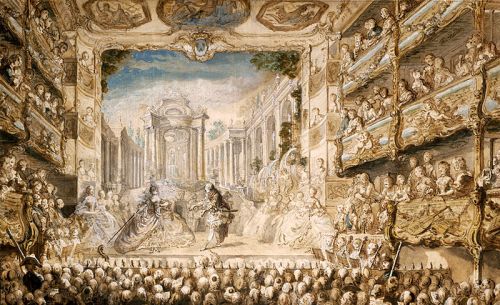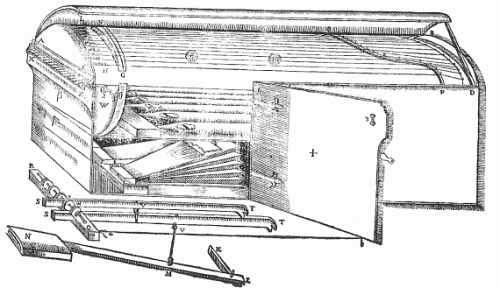The series Schola Cantorum Basiliensis: Scripta was inaugurated by Schwabe Verlag in 2009 with Die frühen Werke Johann Sebastian Bachs: Stil, Chronologie, Satztechnik by Jean-Claude Zehnder. The book follows the young composer’s development from 1699 to 1708, showing how even in his teens Bach’s compositions evinced an innovative, experimental mind at work.
Category Archives: Baroque era
Schola Cantorum Basiliensis: Scripta
Filed under Baroque era, New series
Tagged as Bach, Composers, Composition, Schola cantorum (papal choir)
Melodiarium hymnologicum Bohemiae
Produced by a team of scholars from the Ústavu hudební vědy at Masarykova univerzita in Brno, Melodiarium hymnologicum Bohemiae is a digital catalogue of monophonic Latin, Czech, and German sacred song found in sources located in the Czech lands or imported into the Czech lands, from the earliest beginnings until the eighteenth century. The database, which is largely bilingual in Czech and English, includes facsimiles and text and melody indexes, along with numerous annotations. While users must establish logins, no fee is required; the resource is supported by the Ministerstva školství, mládeže a tělovýchovy České republiky.
Filed under Baroque era, Classic era, Middle Ages, Notation, Renaissance, Resources
Tagged as 18th century, Bohemia, Composition, Czech lands, Czech music, Czech Republic, Hymns, Masarykova univerzita, Monophony
Operatic degeneracy I
An anonymous pamphlet from around 1733 titled Do you know what you are about? or, A Protestant alarm to Great Britain rails against the egregious inroads that Roman Catholic degeneracy, not least in the form of Italian opera, were making in England.
Händel and Senesino are particularly singled out for “playing at the dog and bear, exactly like the two kings of Poland contending for the Empire of Doremifa” in contrast to the humble, hardworking John Gay, whose praiseworthy Beggar’s opera reached the stage only through his own admirable toil and steadfastness.
This according to William Charles Smith’s “Do you know what you are about?: A rare Handelian pamphlet”, an article in The music review no. 98 (2 April 1964, pp. 114–19); the issue, which honors the 70th birthday of the English librarian, bibliographer, and honorary curator of the Royal Music Library Cecil Bernard Oldman (1894–1969), is covered in our recently published Liber Amicorum: Festschriften for music scholars and nonmusicians, 1840–1966.
Above, a satirical depiction by John Vanderbank from around 1723 of Senesino, Francesca Cuzzoni, and Gaetano Berenstadt performing in a Händel opera (probably Flavio, re di Longobardi).
Related articles:
Filed under Baroque era, Curiosities, Dramatic arts, Humor, Opera, Reception
Tagged as Beggar's Opera, Composers, Flavio, Francesca Cuzzoni, Gaetano Berenstadt, George Frideric Handel, Great Britain, Händel, Italian opera, John Gay, Opera, Senesino
Comedy versus opera
Music was commonly introduced into French plays at least by the time of Molière, but after Louis XIV gave Lully a monopoly on opera in 1673 this practice was drastically circumscribed. Actors protested politely at first, but Louis did not take the hint, so dramatists began to turn to their sharpest weapon: satire.
Operagoers were depicted as ridiculous losers, and operas as overblown and barbaric. Opera houses were portrayed as venues for illicit flirtation, and opera singers as people with questionable morals. Operas were said to bay at the moon, to have no new airs, and to employ monkeys instead of poets and musicians. While this derision had no apparent effect on the opera world, it gave French comedy a rich new subject.
This according to “Comedy versus opera in France, 1673–1700” by Henry Carrington Lancaster, an essay included in Essays and studies in honor of Carleton Brown (New York : New York University Press, 1940), which is covered in RILM’s recently-issued Liber Amicorum: Festschriften for music scholars and nonmusicians, 1840–1966.
Above, Gabriel Jacques de Saint-Aubin’s depiction of Lully’s Armide as performed at the Palais-Royal in 1761.
Related articles:
Filed under Baroque era, Curiosities, Dramatic arts, Humor, Literature, Opera, Reception
Tagged as Comedy, France, Israel Silvestre, Molière, Opera
Atti online
The Fondazione Giorgio Cini, a non-profit cultural institution based in Venice, launched the series Atti online in 2009 with Antonio Vivaldi: Passato e futuro, a collection of papers presented at the eponymous conference that the foundation sponsored in 2007. As the series title implies, the full collection is online; there is no charge for access.
Mozart's flyswatter
Franz Niemetschek’s legendary report that La clemenza di Tito was composed in 18 days was not seriously challenged until 1960, when Tomislav Volek published important archival materials relating to the chronology of the opera’s composition. Physical evidence from the autograph manuscript, including the remains of a fly squashed on the paper (probably by the composer in the heat of August), contributes to discrediting the hypothesis that Mozart’s work had begun before he signed his July 1791 contract for the opera.
This according to “The chronology of Mozart’s La clemenza di Tito reconsidered” by Sergio Durante (Music & letters, 80, no. 4 (Nov 1999): 560–594), where the evidence is described thus:
“On folio 114 of the autograph . . . a thick black spot in the shape of a cross is found. . . . On direct and close examination, the centre of the spot proves to host the remains of a fly (a kind of evidence not often found in music sources!). After a long reflection, my best guess is that the fly was smashed under the loose bifolium at the very time of composition, after it had unduly annoyed Mozart at work; he also provided a witty ‘service’ to the insect by marking a cross over it (‘requiescat’!); in any case, such was the force and determination of the action, combined with the gluing action of the ink, that the corpse is still stuck on the page after two hundred years of musicological investigations.” (p. 574)
More articles about Mozart are here.
Filed under Animals, Baroque era, Curiosities, Nature, Science, Source studies
Tagged as Composers, Composition, Insects, La clemenza di Tito, Mozart, Opera, Wolfgang Amadeus Mozart
Dal grammofono al lettore: Discografie ragionate
The Italian publisher L’Epos launched the series Dal grammofono al lettore: Discografie ragionate in 2009 to present annotated discographies that illustrate aspects of the history of sound recordings. The first book in the series, Bach Goldberg, Beethoven Diabelli by Carlo Fiore, illuminates the interpretation and reception histories of these two landmark sets of keyboard variations.
Comments Off on Dal grammofono al lettore: Discografie ragionate
Filed under Baroque era, Classic era, New series, Reception
Tagged as Bach, Beethoven, Composers, Diabelli variations, Goldberg variations, Sound recording and reproduction
Technical drawings
Technical drawings of instruments are of interest to instrument builders, organologists, and iconographers—they may also be useful for researchers working on performance practice, theory, or aesthetics. Technical drawings may also be found as freestanding publications issued by museums and collections to encourage reconstructions of the historical instruments that they own.
This example from Athanasius Kircher’s Musurgia Universalis (1650) shows the inner workings of a claviorganum, which Michael Praetorius described in his Syntagma musicum.II: De organographia (1619) as a keyboard instrument in which strings and pipes “sound together to produce a pleasing sound”.
Below, a claviorganum in action.
Comments Off on Technical drawings
Filed under Baroque era, Iconography, Instruments, Publication types
Tagged as Athanasius Kircher, Claviorgan, Keyboard instrument, Michael Praetorius, Technical drawing










